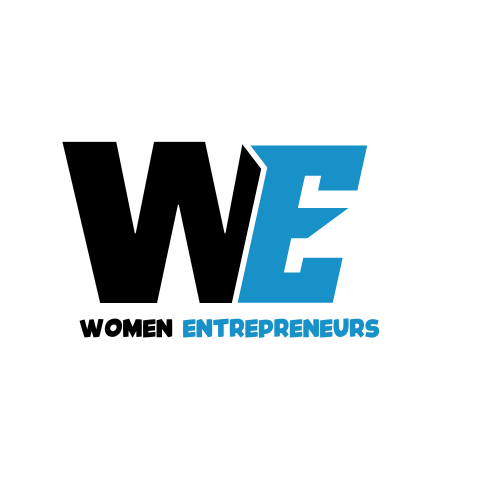Bridging the Gap: Empowering Women-Led Startups through Venture Capital
In the ever-evolving landscape of entrepreneurship, women-led startups are increasingly making waves, contributing innovation and diversity to the business world.
However, a persistent challenge looms large – the investment gap. This article delves into the intricate relationship between venture capital and women-led startups, aiming to illuminate the hurdles faced by women entrepreneurs and propose strategies to bridge this investment divide.
The dynamic nature of venture capital, a driving force behind numerous successful startups, underscores its significance in shaping the entrepreneurial ecosystem.
Despite growing awareness of the importance of diversity, women-led startups continue to encounter obstacles in securing funding. This investment gap encompasses a range of factors, including gender bias, limited access to networks, and a striking underrepresentation in pitching opportunities.
Table of Contents
Understanding the Investment Gap: Defining the Disparity
Venture capital serves as a catalyst for startup growth, but the disparity in investment opportunities is multifaceted. Gender bias, deeply ingrained in the investment landscape, influences funding decisions in ways that disadvantage women-led ventures. Networks, a crucial component of securing venture capital, are often elusive for women entrepreneurs. This section unravels the layers of the investment gap, providing a nuanced perspective on the challenges faced by women-led startups.
The gender gap in venture capital is not merely a statistical imbalance; it represents a systemic issue that requires a comprehensive understanding. Women entrepreneurs often find themselves at a disadvantage, grappling with biases that impact their access to funding. By defining these disparities, we lay the groundwork for exploring tangible solutions to foster a more inclusive investment landscape.
Key Challenges for Women-Led Startups: Breaking Down Barriers
Gender Bias in the Investment Landscape:
Gender bias remains a formidable challenge for women-led startups seeking venture capital. Unconscious biases among investors can manifest in funding decisions, creating a significant hurdle for women entrepreneurs. Studies reveal that identical pitches from men and women are evaluated differently, with stereotypes influencing perceptions of competence and leadership. These biases not only limit financial opportunities for women-led startups but also perpetuate a cycle of inequality in the entrepreneurial ecosystem.
Limited Access to Networks:
Networking plays a pivotal role in securing venture capital, yet women entrepreneurs often face challenges in accessing influential networks. The lack of diversity in existing networks compounds the issue, creating an environment where opportunities are disproportionately distributed. Addressing this challenge involves not only dismantling existing barriers but actively creating avenues for women-led startups to connect with potential investors, mentors, and collaborators.
Underrepresentation in Pitching Opportunities:
A critical aspect of securing venture capital is the ability to pitch ideas effectively. However, women-led startups find themselves underrepresented in pitching opportunities, limiting their visibility to potential investors. This section explores the disparities in pitch invitations and suggests actionable steps to create more inclusive pitching forums. By addressing these imbalances, we can empower women entrepreneurs to showcase their ventures and attract the funding they deserve.
Impact of the Investment Gap: Beyond Numbers
Stifled Innovation:
The investment gap’s impact extends beyond mere numbers; it stifles innovation by limiting the diversity of perspectives in startup funding. Diverse teams, including those led by women, bring a variety of experiences and ideas to the table, fostering creativity and problem-solving. Case studies of successful women-led startups serve as testament to the innovative potential that flourishes when diverse voices are empowered in the entrepreneurial landscape.
Economic Implications:
Beyond the immediate consequences for women-led startups, the investment gap holds broader economic implications. Supporting women entrepreneurs isn’t just a matter of equality; it’s an investment in economic growth. Studies show that increasing the representation of women in entrepreneurship leads to job creation, economic expansion, and a more resilient business ecosystem. By addressing the investment gap, we not only empower women but contribute to the overall prosperity of the business community.
Strategies for Bridging the Gap: Empowering Women Entrepreneurs
Promoting Diversity in Investment Teams:
One key strategy for bridging the investment gap is promoting diversity within investment teams. Diverse teams bring a variety of perspectives to the decision-making process, reducing the impact of unconscious biases. Initiatives aimed at increasing diversity in venture capital firms, such as targeted recruitment and mentorship programs, play a crucial role in creating more inclusive environments. By addressing the lack of diversity at the decision-making level, we can pave the way for fairer and more equitable funding opportunities for women-led startups.
Educational Programs and Mentorship:
Education and mentorship programs are instrumental in empowering women entrepreneurs. Providing resources and guidance to women-led startups not only enhances their business acumen but also builds a supportive ecosystem. Mentorship programs connect aspiring women founders with experienced mentors, offering valuable insights and networking opportunities. This section explores successful examples of mentorship initiatives and educational programs, emphasizing their impact on the funding outcomes of women-led startups.
Creating Inclusive Pitching Platforms:
Another crucial aspect of bridging the investment gap is creating inclusive pitching platforms. Women-led startups should have equal opportunities to present their ideas and attract investors. This involves reevaluating existing pitching forums, addressing biases in selection processes, and actively promoting inclusivity. By showcasing successful examples of inclusive pitching events, we can inspire the creation of more platforms where women entrepreneurs can confidently and competently present their ventures.
The Road Ahead: Toward a More Inclusive Future
Policy Advocacy and Government Initiatives:
Governments play a pivotal role in closing the investment gap through policy advocacy and initiatives. This section examines the role of government in fostering a more inclusive entrepreneurial landscape. Successful policies implemented in various regions are highlighted, showcasing the positive impact of governmental support in leveling the playing field for women-led startups. By exploring effective policies, we can identify models that can be replicated or adapted to different contexts.
Measuring Progress:
Tracking the advancement of women-led startups is essential for measuring progress and identifying areas for improvement. This section discusses the importance of developing metrics that go beyond mere funding numbers. Celebrating milestones and acknowledging challenges in achieving gender parity in venture capital contribute to a culture of accountability. By assessing progress, we can continue refining strategies to create an environment where women entrepreneurs thrive.
Conclusion: Empowering Change
In conclusion, the journey to bridge the investment gap between venture capital and women-led startups is not just an economic imperative; it is a fundamental step toward fostering innovation and progress for all. By understanding the challenges, proposing actionable strategies, and celebrating the successes of women entrepreneurs, we can collectively pave the way for a more inclusive and diverse entrepreneurial landscape.








